Baby tarantulas are the offspring of adult tarantulas, that much everyone knows. However, people often don’t know too much else about them. How fast they grow, where they come from, and what they look like are questions that people often have.
Today, we’re going to take an in-depth look at baby tarantulas by going over 9 interesting facts about them. Of course, when talking about baby animals you can’t leave out pictures, so we’ll include plenty of photos and videos for you to enjoy as well.
9 Facts about Baby Tarantulas
1. Baby Tarantulas are often called slings
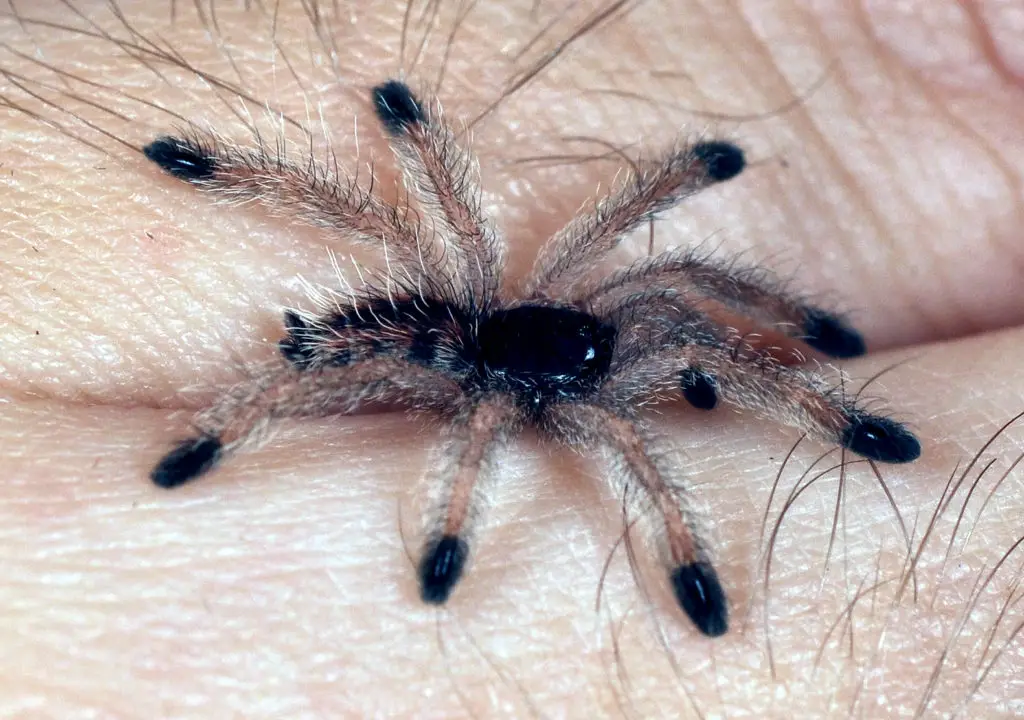
Slings, short for spiderlings, are what baby tarantulas are often called in the spider-keeping hobby.
Slings are quite difficult to raise into adulthood, which is why they’re often cheaper to buy than adult specimens.
2. Slings come from eggs and can have thousands of siblings
When tarantulas mate, the males deliver their sperm to the female who then fertilizes the eggs that are kept in an egg sac. There can be hundreds or even thousands of eggs in a single egg sac.
Once the eggs are ready to hatch, thousands of slings will be born. In the wild, only a few of those will make it to adulthood. In captivity, however, we can provide them with everything they need which means that a much larger percentage of them will make it to adulthood.
3. Baby tarantulas are incredibly tiny
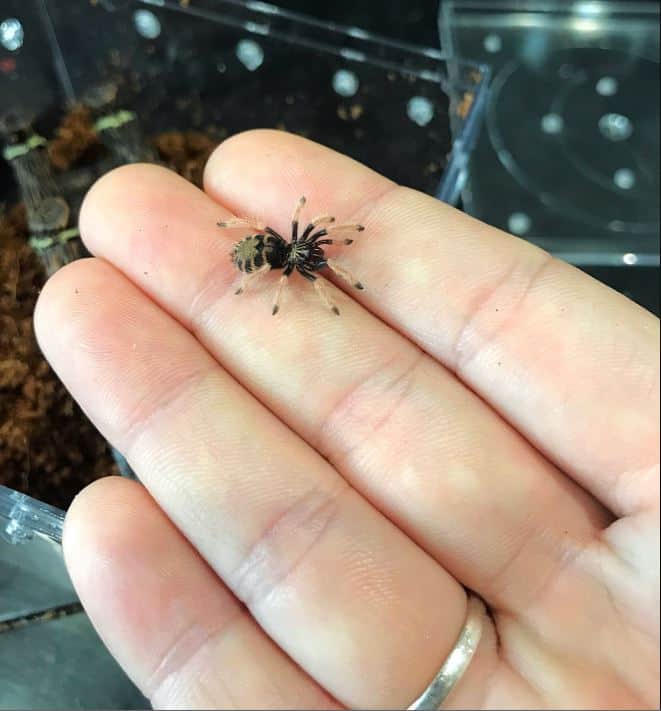
When the slings first enter the world, they’re incredibly tiny. Slings of arboreal species are typically quite a bit larger than those of terrestrial species. Terrestrial newborns are typically about a quarter of an inch while arboreals can easily be half an inch in size.
This is a far cry from their adult size, which can top out at 11″ when fully grown!
4. Mothers generally do not raise their young
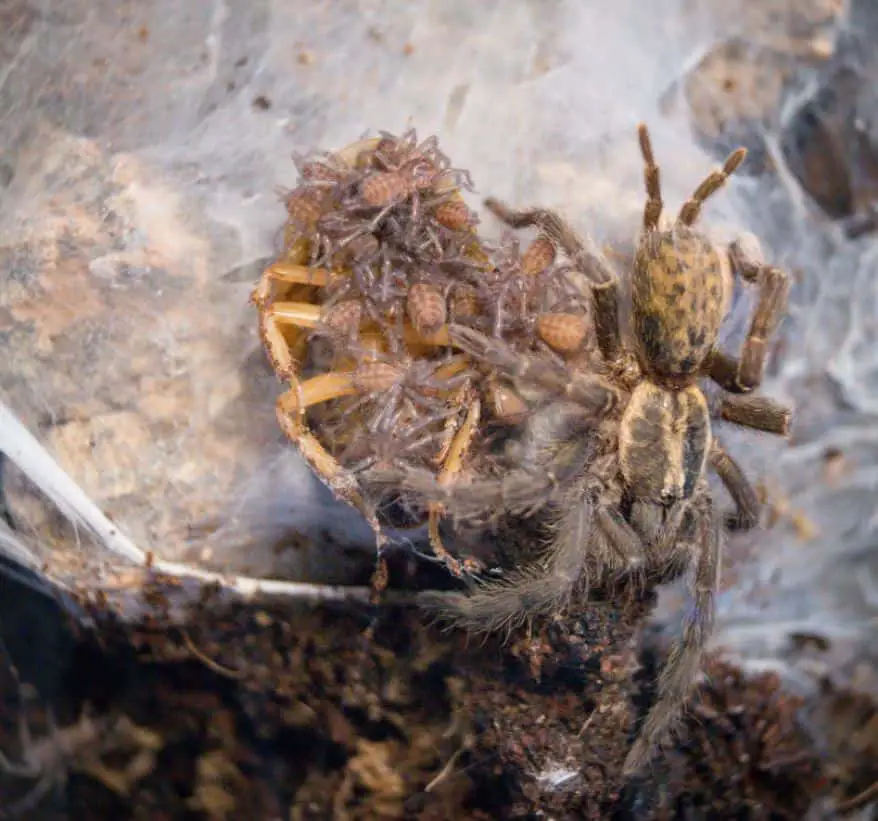
Generally speaking, female tarantulas do not raise their young. Instead, they leave her burrow very quickly and will have to fend for themselves.
However, there are some species in the genus Avicularia that do seem a little bit more tolerant of their offspring staying with them a little longer.
Also, the Socotra Island Blue Baboon is one of the few tarantula species that can live communally, and mothers of this species typically do raise the babies into adults sometimes.
5. They can grow very quickly
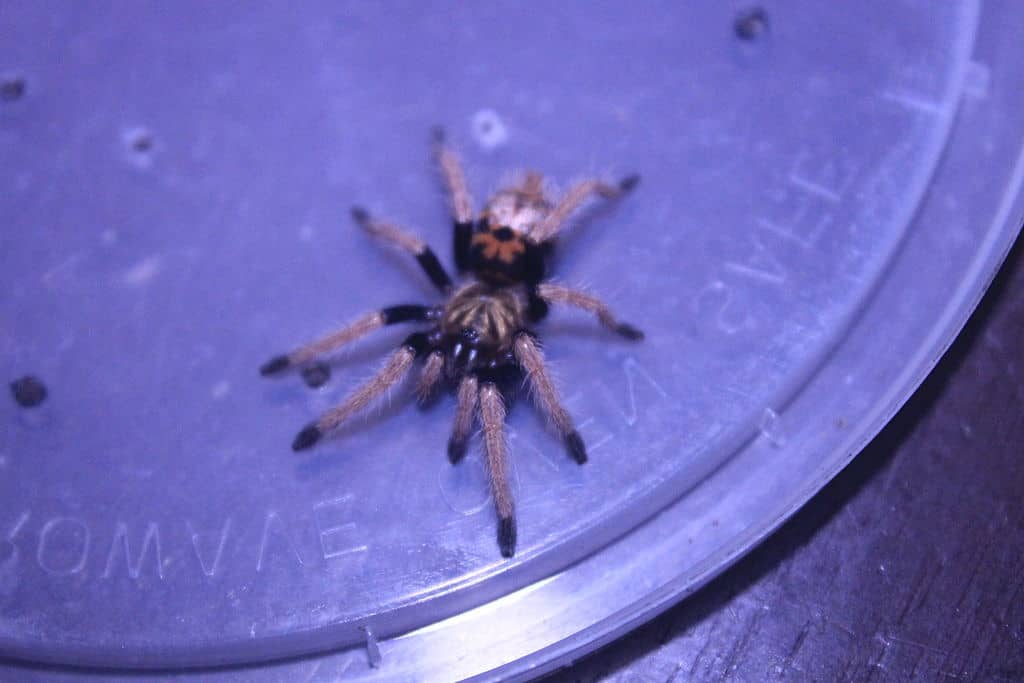
Baby tarantulas can grow very quickly, but how fast they grow does depend on their species. Some species grow to a size of 11″ in a few years’ time, while others only grow to a size of about 5″ in a much longer period of time.
Since tarantulas have an exoskeleton that does not grow with them, they have to shed this exoskeleton when they grow. This process is called molting and is something that every baby goes through many times in order to reach their full size.
Once they’re fully grown, males are typically quite a bit smaller than females. Males typically reach their full size in 3 to 7 years, and then only live a few years after that. Females, on the other hand, reach their full size in 4 to 10 years and can live for up to 30 years!
6. Slings need a lot of food to grow
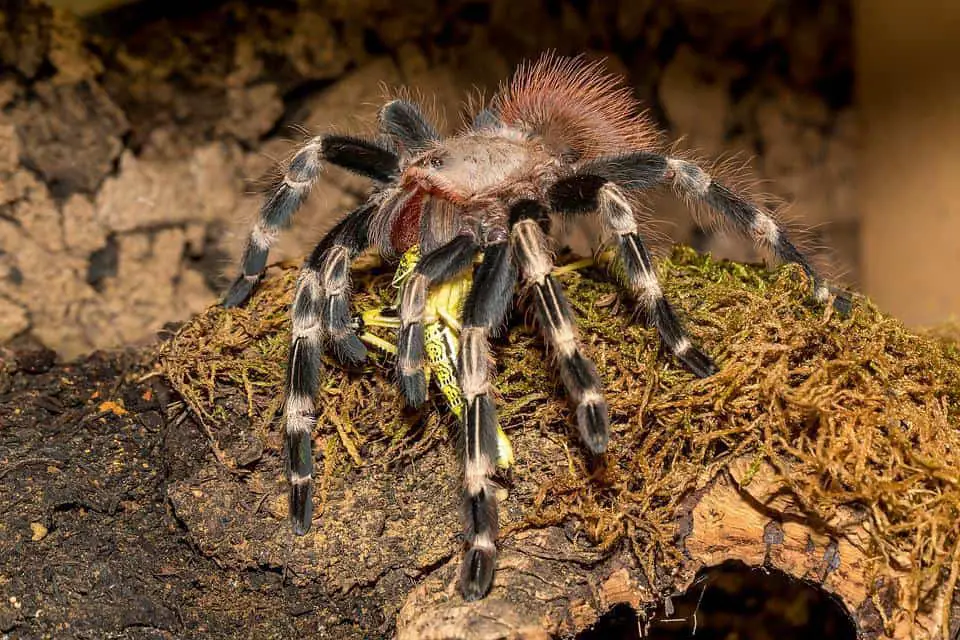
In the wild, slings will eat whatever they can get their hands on. In captivity, they’re typically fed with cricket legs, mealworm segments, flightless fruit flies, or other pieces of feeder insects.
Since growing takes quite a lot of energy, they need a large amount of food relative to their size. Most hobbyists choose to feed their slings as often as possible to ensure that they will grow properly.
Once they’ve grown a little bigger they enter the juvenile stage of their life. At this point, they’re not fully grown yet but they are capable of hunting their own live prey.
7. Baby tarantulas are very different in look and color than adults
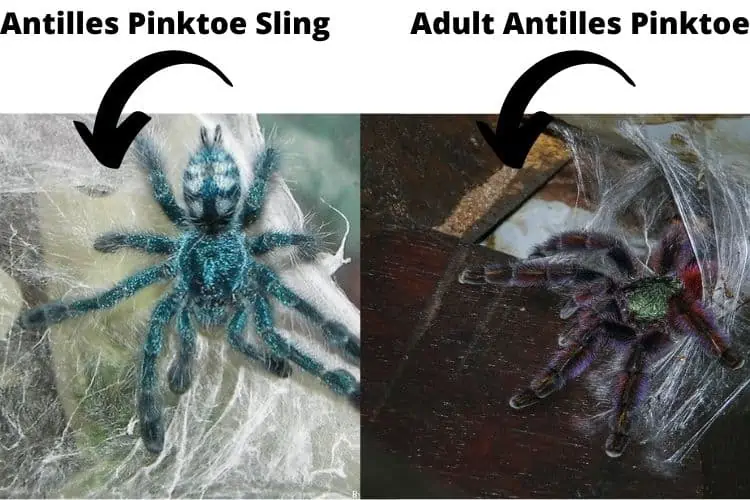
Whereas many tarantulas are known for their colorful appearance, babies often look very different than their fully grown versions.
They’re of course much smaller, but they’re often also very different in color. Slings don’t get their adult colors until they grow older. With every molt, their appearance changes, which is very interesting to see.
In addition, as babies, they do not have the same amount of setae (hairs) that adult tarantulas are so well known for.
8. Baby tarantulas do not eat their mom
There was a video on National Geographic a while back that showed a female spider being eaten by her young. She sacrificed her body so that her young could eat.
This triggered some questions from people about whether tarantulas exhibit similar behavior. After all, tarantulas are spiders as well.
However, for tarantulas, this is not the case. In fact, the opposite happens sometimes; the females sometimes eat the slings, or even the egg sac if they feel stressed!
9. Mom often eats dad

In order to create baby tarantulas, males visit females to fertilize their eggs. However, this is a risky endeavor for them.
Females will let the males fertilize their eggs, but afterward, they often attempt to eat them. Males of course do not want to be eaten, so some species have even evolved to have tibial hooks to block the female’s fangs from piercing them.
Females attempt to eat the males because in her mind the male has done its job. They’re not really affectionate creatures so they don’t feel love for their partner or anything like that.
She figures that if the male has done its job, she might as well eat it to get some nutrients from it to help give birth to her offspring!
Final words
So, there you have it, the top 9 facts about baby tarantulas, or slings as you now know they’re often called.
These tiny arachnids grow into some of the most fearsome spiders in the world and they do so at a rapid pace. While growing, they shed their skeleton to make way for a bigger one.
They’re truly one of the most interesting animals in the world, and it makes a lot of sense why they’ve become so popular among hobbyists.
- How Long Do American Eskimo Dogs Live? Important Factors and Care Tips - September 29, 2023
- Do American Bulldogs Need Grooming? Essential Tips and Care Guidelines - September 29, 2023
- Do Bengal Cats Enjoy Playing? Essential Tips for Keeping Them Active - September 29, 2023